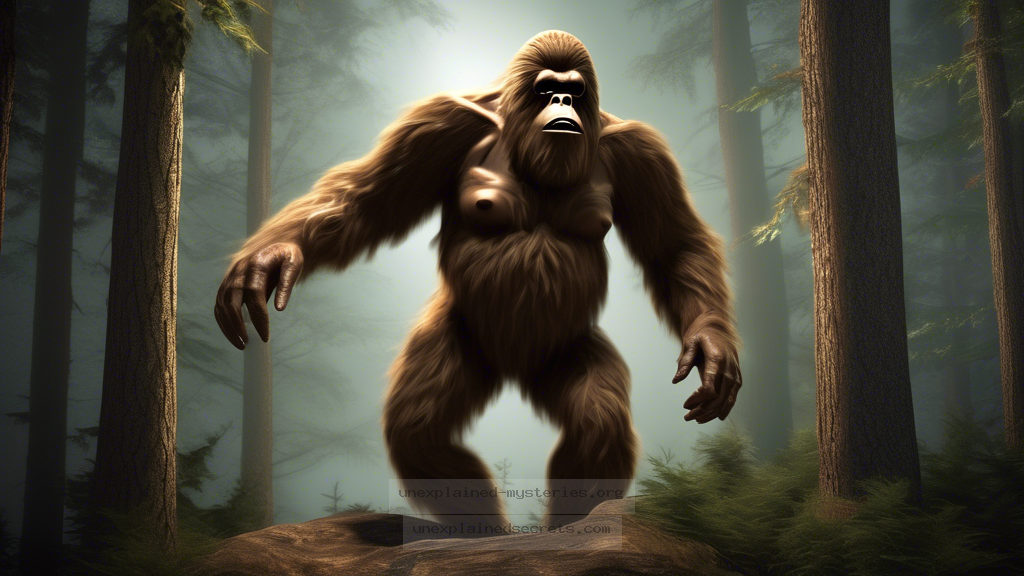What Compelling Evidence Supports the Existence of Bigfoot?
What Compelling Evidence Supports the Existence of Bigfoot?
The question of whether Bigfoot, the elusive ape-like creature, truly exists has fascinated researchers, enthusiasts, and skeptics alike for decades. As a symbol of cryptozoology, Bigfoot represents the intersection of folklore, science, and the human desire to explore the unknown. This blog post delves deep into the compelling evidence that supports the existence of Bigfoot, examining famous encounters, physical evidence, and the scientific community’s response. Understanding this mystery is essential not just for cryptozoology fans but also for those intrigued by the boundaries of science and the unexplained. Let’s dive into the evidence and theories surrounding this legendary creature.
Historical Context of Bigfoot Sightings
Bigfoot sightings date back centuries, long before the term “Bigfoot” was ever coined. Indigenous peoples across North America have hundreds of stories about large, hairy creatures roaming the forests. For instance, the Native American tribes of the Pacific Northwest refer to the creature as “Sasquatch,” a word derived from the Halkomelem language. These accounts often portray Bigfoot as a guardian of the forest, a being both revered and feared.
The modern era of Bigfoot sightings began in the mid-20th century, notably with the famous 1958 discovery of large footprints in Bluff Creek, California. This incident prompted a surge of interest and media coverage, leading to more reported sightings and investigations. This historical backdrop is crucial to understanding the cultural significance of Bigfoot and the ongoing quest to find concrete evidence of its existence.
Core Concepts: Physical Evidence
One of the most compelling aspects of the Bigfoot mystery is the physical evidence that has been presented over the years. This includes footprints, hair samples, and even alleged video recordings. The footprints, often measuring over 15 inches long and 7 inches wide, have been found in various locations across North America. Some researchers argue that the depth and width of these tracks indicate a creature much larger than any human could create.
In addition to footprints, hair samples have been collected, some of which have been tested and showed characteristics that are not consistent with known species. For instance, a hair sample taken from the Sierras in California was analyzed and determined to be of unknown origin, further fueling speculation about the creature’s existence.
Famous Encounters and Sightings
Numerous encounters have been reported over the years, some of which have gained significant attention. The most famous of these is the Patterson-Gimlin film, taken in 1967 in Bluff Creek, California. This short film allegedly captures a female Bigfoot walking through the woods. Despite extensive analysis, the authenticity of the footage remains disputed. Supporters argue that the creature’s gait and anatomy do not resemble that of a human in a costume, while skeptics claim it could easily be a hoax.
Another notable encounter occurred in 1978 when a group of loggers in Washington State reported seeing a large, hairy creature standing near their camp. The loggers claimed they witnessed the creature for several minutes, and one even described it as having a distinct smell. This incident was corroborated by multiple witnesses and has become a popular reference point in Bigfoot folklore.
Scientific Analysis and Skepticism
The scientific community has approached the question of Bigfoot with a healthy dose of skepticism. Most scientists argue that the evidence is insufficient to support the existence of such a creature, primarily due to the lack of a body or conclusive biological evidence. Dr. Jeff Meldrum, a prominent anthropologist, has studied Bigfoot footprints and argues that they exhibit unique characteristics that suggest an unknown primate species may exist.
However, the majority of scientists remain unconvinced. They point out that many of the purported sightings can be attributed to misidentified animals, hoaxes, or even the human tendency to see patterns where none exist. For example, bears walking bipedally can sometimes be mistaken for Bigfoot, leading to false reports. The scientific method requires rigorous evidence, and until such evidence is presented, skepticism will likely persist.
Alternative Perspectives and Theories
While the mainstream scientific community often dismisses the existence of Bigfoot, alternative perspectives suggest that there could be more to the story. Some researchers propose that Bigfoot is a surviving species of hominids, perhaps a descendant of Gigantopithecus, a giant ape that lived millions of years ago. This theory posits that these creatures could have adapted and survived in remote areas of North America, evading human detection.
Another theory is that Bigfoot may possess a level of intelligence that allows it to avoid human contact. Proponents of this view suggest that the creature could have a complex social structure, living in small, tight-knit groups that communicate and work together to avoid humans. This possibility complicates the search for Bigfoot, as it implies a level of awareness and strategy that is not typically attributed to wild animals.
Common Misconceptions about Bigfoot
Despite the wealth of information surrounding Bigfoot, several misconceptions persist. One common myth is that all sightings are hoaxes. While some incidents have been proven to be fabrications, many witnesses report seeing something they cannot explain, lending credibility to their accounts.
Another misconception is that Bigfoot is merely a modern myth, created for entertainment. However, as previously mentioned, the creature has roots in indigenous folklore, suggesting a deeper cultural significance that transcends mere storytelling. Understanding these misconceptions is vital for anyone interested in investigating the existence of Bigfoot.
Best Practices for Investigating Bigfoot
For enthusiasts and researchers keen on investigating the existence of Bigfoot, following best practices is essential. Firstly, approach the investigation with an open mind, recognizing the difference between evidence and anecdote. Secondly, document encounters rigorously, including time, location, weather conditions, and witness accounts. This information can be invaluable for later analysis.
Additionally, utilize technology to aid investigations. Trail cameras, sound recorders, and drones can provide new insights and capture evidence that might otherwise go unnoticed. Engaging with local communities and fostering relationships with those who live in areas with frequent sightings can also yield valuable information and leads.
Future Developments and Ongoing Research
The quest for evidence of Bigfoot is far from over. New technologies, such as environmental DNA (eDNA) analysis, are being explored to detect unknown species in specific habitats. Researchers are collecting soil and water samples from areas with frequent sightings, hoping to find genetic material that could point to the existence of Bigfoot.
Moreover, as public interest in cryptozoology grows, more funding and resources may become available for serious scientific research. Collaborative efforts between cryptozoologists and mainstream scientists could pave the way for new discoveries, potentially revealing whether Bigfoot is a myth or a reality.
Conclusion: The Unending Search for Bigfoot
The evidence supporting the existence of Bigfoot remains a tantalizing puzzle. From historical accounts and physical evidence to scientific skepticism and alternative theories, the mystery continues to captivate the imagination of many. While the scientific community may lean towards disbelief, the multitude of sightings and stories cannot be easily dismissed.
As we explore the boundaries of what is known and unknown, the quest for Bigfoot serves as a reminder of humanity’s enduring fascination with the mysteries of our world. Whether you are a skeptic or a believer, the search for evidence will undoubtedly continue, inspiring future generations to investigate the unexplained. After all, every great mystery invites exploration, and who knows what new discoveries may lie ahead?
Other Articles
Recent Posts
- What Happened to Flight MH370? The Conspiracy Theories That Still Haunt Us
- What Secrets Lurk Within the Walls of the Infamous Trans-Allegheny Lunatic Asylum?
- What Evidence Supports the Existence of Bigfoot in the Pacific Northwest?
- What Happened to the Indus Valley Civilization? Unraveling the Mysteries of Ancient Urban Life
- Can Telepathy Be Scientifically Proven Through Laboratory Evidence?







